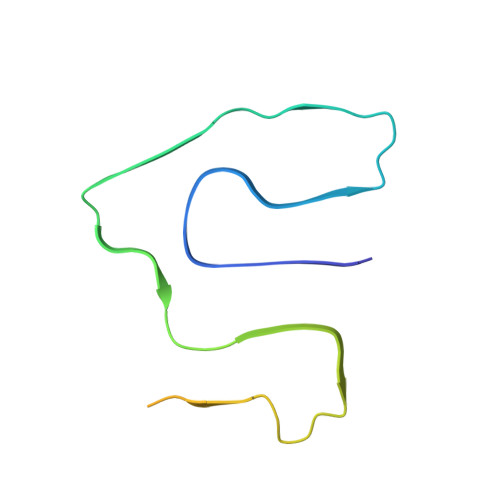Cryo-EM demonstrates the in vitro proliferation of an ex vivo amyloid fibril morphology by seeding.
Heerde, T., Rennegarbe, M., Biedermann, A., Savran, D., Pfeiffer, P.B., Hitzenberger, M., Baur, J., Puscalau-Girtu, I., Zacharias, M., Schwierz, N., Haupt, C., Schmidt, M., Fandrich, M.(2022) Nat Commun 13: 85-85
- PubMed: 35013242
- DOI: https://doi.org/10.1038/s41467-021-27688-5
- Primary Citation of Related Structures:
7OVT - PubMed Abstract:
Several studies showed that seeding of solutions of monomeric fibril proteins with ex vivo amyloid fibrils accelerated the kinetics of fibril formation in vitro but did not necessarily replicate the seed structure. In this research we use cryo-electron microscopy and other methods to analyze the ability of serum amyloid A (SAA)1.1-derived amyloid fibrils, purified from systemic AA amyloidosis tissue, to seed solutions of recombinant SAA1.1 protein. We show that 98% of the seeded fibrils remodel the full fibril structure of the main ex vivo fibril morphology, which we used for seeding, while they are notably different from unseeded in vitro fibrils. The seeded fibrils show a similar proteinase K resistance as ex vivo fibrils and are substantially more stable to proteolytic digestion than unseeded in vitro fibrils. Our data support the view that the fibril morphology contributes to determining proteolytic stability and that pathogenic amyloid fibrils arise from proteolytic selection.
Organizational Affiliation:
Institute of Protein Biochemistry, Ulm University, 89081, Ulm, Germany.














